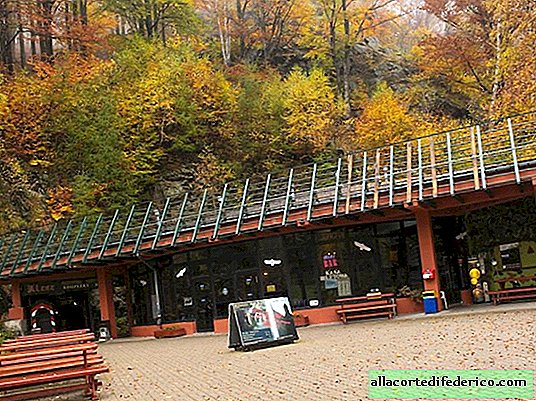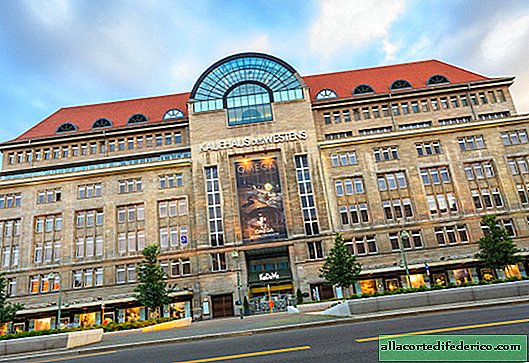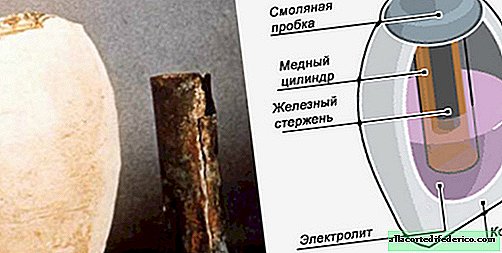Even Stalin was looking for: 3 treasures of Russia that still haunt treasure hunters
Probably every nation has legends about untold riches hidden somewhere in the dungeons. Films are made about this, novels are written. After all, to find them means to go down in history, become infinitely rich and discover millennia-old knowledge. Some of these legends are simply rumors or hopes of people that have no foundation. Others are based on actual historical events, and their discovery of the truth promises to be the greatest discovery. And some treasures have long been found, all their secrets have been unraveled, but the seekers of gold cannot agree with this in any way and, not calming down, continue to search.
Today we tell about 3 legendary treasures of Russia, which still excite the minds of treasure seekers.
Library of Ivan the Terrible
 Ivan IV the Terrible
Ivan IV the TerriblePerhaps this is the most famous Russian treasure, which attracts the attention of not only Russian seekers, but also foreign ones.
According to legend, the niece of the last Byzantine emperor Sophia Paleolog, entering into marriage with Ivan III, came with a dowry. And it included 800 tomes from the library of Constantinople. The works of the ancient Greeks, Romans, ancient Gospels, which for centuries have been collected by the emperors of the Byzantine Empire, passed into the hands of the sovereign of Moscow. The value of such a collection is not only in the number of unique works, but also in their design: after all, books were rare at that time, and they were usually adorned with expensive stones. Therefore, in order to ensure the safety of such a library and protect it from fires and robberies, a secret underground passage into the bunker was dug under the Kremlin. It was there that they placed the library (or the so-called Liberia). How to get there, knew only sovereigns and a small circle of associates. However, after the terrible upheavals that Russia experienced in the late sixteenth and early seventeenth centuries, all information about how to penetrate the underground bunker was lost. During the events of the second half of the 16th century, the library was called the "Ivan the Terrible Libraries," because it is he who is believed to have inherited this treasure from Grandma Sophia.
And for the past 500 years, enthusiasts have not stopped trying to find the mysterious Liberia. Not only “fans” were looking for her, but also political figures: Peter I, the director of the Historical Museum, Prince Shcherbatov and even Stalin, allowed excavations in the Kremlin.
However, every time attempts to find treasures ended in failure. Why? Historians are quite sure: no library has ever existed.
 Sophia Paleolog
Sophia PaleologConstantinople fell in 1453, when Sofia was still a teenager (she was only 12-13 years old). And in Moscow, as the wife of Ivan III, she appeared after almost two decades, in 1472. Where could she keep such an immense library all this time? After the capture of Byzantium by the Turks, Sophia moved to Italy and lived under the auspices of the Pope. If the library existed, then this could not have gone unnoticed by the pontiff. Why, then, was he to give such a valuable load? In addition, Sophia was known as a poor damsel. Rumors of Liberia could enhance her "prestige." However, this did not happen. Information about the imperial library began to spread much later.
Well, all the stories of people who supposedly heard or even saw library books do not stand up to criticism, says historian A. Filyushkin. They are nothing more than a myth.
However, Ivan the Terrible did have a library: in the main, these were liturgical books and annals. Now the collection of manuscripts is scattered across different repositories, but, unfortunately, there are no books in foreign languages there.
Napoleon's Gold
 Napoleon leaves Moscow
Napoleon leaves MoscowAnd here is a riddle that historians, enthusiasts, treasure hunters have been struggling with for more than two hundred years. Where did the trophies that Napoleon took from Moscow in 1812 go?
In October 1812, Bonaparte left Moscow with numerous convoys, stolen at the Mother See. There were gold icons, and Kremlin jewelry, and a cross from the bell tower of Ivan the Great, and various jewels, and weapons, 20 pounds of gold, 300 pounds of silver. But then all the looted trophies did not reach France.
As stated in memoirs, General de Segur ten years after the war, all the loot was flooded in Lake Semlevsky, in the Smolensk region. From this began the whole story with the search for treasures.
Since then, Russian governors, individual enthusiasts, French war veterans, and Germans during the Great Patriotic War searched for Bonaparte gold in this lake. Two Soviet expeditions were organized in the postwar period to this area. But nothing was found.
It was then that they began to wonder if the treasures of Moscow were really dumped into the lake? Can one trust the words of the general?
According to historian V. Bezotosny, there is no point in looking for the loss in that lake, there is nothing there. The fact is that part of the loot by the Napoleonic army was repulsed by the Cossacks: a huge number of trophies were returned to the temples. But far from all, because the values exported from the Kremlin were never discovered.
 The French leave Russia
The French leave RussiaWhere to look for them? It is known that the last time a convoy with Moscow trophies was seen in Belarus, in the Orsha region. So it’s possible that somewhere there some of the trophies are buried. But in addition, you can search on the entire route of the French from Maloyaroslavets. After all, the French, retreating, simply left everything "unnecessary" on the way to the West. They, hungry, exhausted, at that time were not up to gold and not to trophies. And even more so, they had no time to accurately determine and record the place where they dumped the loot.
In general, the mystery of Napoleon’s Russian trophies has not been solved so far. And since not one of the missing items has surfaced abroad, it inspires hope that someday the rest of the "Napoleonic gold" will be found somewhere in Russia.
Gold Kolchak
 Admiral Kolchak
Admiral KolchakThe mystery of Russia's gold reserves has long been solved by experts, explained, but the treasure hunters do not give up and everyone is trying to find the "lost" admiral's gold.
At the time of World War I, Russia's gold reserve totaled more than 1 billion rubles, which was the largest reserve in the world. History says that part of this stock, about 600 million, was exported to Kazan back in 1915. In 1918, already during the Civil War, this Kazan reserve was taken by white troops. And since then it began to be called "Kolchak gold", since after some time Admiral Kolchak was declared the Supreme Ruler of Russia. Gold was transported to Omsk, the capital of the white movement. Then they decided to send him further along the Trans-Siberian Railway in wagons to Vladivostok. Kolchak also rode in the same train. In 1919, during this trip, Kolchak decided to "surrender" to the Bolsheviks. The latter got most of the gold, 2/3 of the total.
What happened to the remaining 200 million? They are considered the very “Kolchak’s lost gold," and they are surrounded by countless legends. But now, thanks to the researchers, we can say for sure what exactly happened to the remaining gold bars.
40 million fell into the hands of Ataman Semenov, who spent them all on military needs.
About 1 million was stolen for some reason by someone, presumably the Czechoslovak corps, who was traveling with Kolchak. However, even if this is so, then it will not be possible to return them, since, most likely, they were spent on private needs.
 Czechoslovak corps R. Hyde with protection
Czechoslovak corps R. Hyde with protectionNevertheless, the remaining gold bullion was sold by the Minister of Finance of the Kolchak government Alexander Alexandrovich Nikolsky abroad.
There is nothing left of the gold reserve, but to this day there is information about the allegedly "found" ingots of Kolchak's gold somewhere in Russia.

















